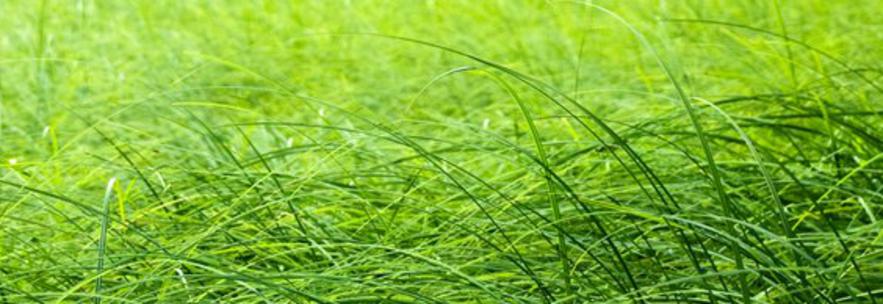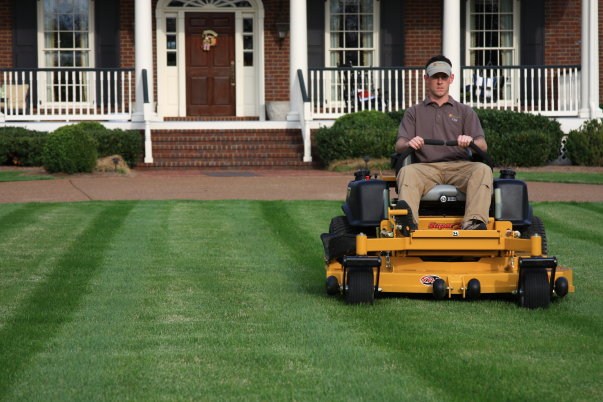Winterize Your Lawn
by David Steg on 11/30/15

If all the conflicting advice about whether or not to winterize your lawn has left you confused, you’re not alone! But figuring out what to do may not be as hard as it seems. Here’s what you need to know about how to prepare your lawn for winter.
What Is a Winterizer?
Your lawn’s nutrient needs change in the fall in preparation for the cold weather ahead. Winterizing fertilizers are high in potassium (chemical symbol: K), the third number listed on the fertilizer label.

Winterizers have a higher potassium content than other lawn fertilizers.
Potassium is a very important nutrient in overall plant health. It works at the cellular level to strengthen and harden plants from top to bottom, making them more tolerant of cold and stress. Potassium also helps a plant absorb other nutrients, making it an important component of balanced feeding for your lawn.
The other two nutrients in fertilizer are nitrogen, the first number (chemical symbol: N), which promotes leaf and stem growth; and phosphorus, the middle number (chemical symbol: P), to enhance root growth and fruit production.
Commercial winterizer fertilizers usually contain higher levels of potassium and lower levels of nitrogen than early-season “turf building” type fertilizers. For example, Scotts Winter Guard fertilizer has an N-P-K number of 24-2-14 while their standard Turf Builder is 29-2-4.
Winterizers Are for Cool-Season Grasses

Most commercial winterizers are formulated for cool-season grasses such as fescue and bluegrass. These type of lawns:
- Have their peak growing season in the fall, so that’s a great time to feed them.
- Need increased potassium and decreased nitrogen as the season progresses.
Some lawn care professionals believe that a fall application of winterizer is the single most beneficial thing you can do for cool-season lawns, and the best choice if you’re only fertilizing once. Among the main commercial fertilizers, winterizers are more balanced than turf-builders, so they’re a better choice for once-a-year feeding.
Warm-Season Grasses Beware
Winterizers should not be used with warm-season grasses (Bermuda, St. Augustine, zoysia, centipede) because they:
- Go dormant in the winter while an application of fertilizer spurs new growth.
- Grow in warmer climates where winterizing is less of an issue.
- While warm-season grasses need potassium, it should be applied during spring and summer instead of fall.

The nutrient ratio is more important than the name on the label.
What’s All The Hype?
If you follow the seasonal parade of fertilizer products, winterizers are last in the lineup of recommended summer and fall fertilizers. But look closely and you’ll notice that the earlier feedings are almost pure nitrogen, because nitrogen is what makes your grass green and thick.
Winterizers appear on shelves in the fall to provide the potassium that was left out of the earlier products. It’s quite a clever marketing plan, but it can cost you a fortune! If you substitute a slow-release fertilizer with more balanced nutrients for the typical summer blend, you can cut down on the number of applications needed.
For established lawns, turf experts recommend feeding with at least three parts nitrogen for every one part potassium to provide maximum green-up and overall health, with at least half of the nitrogen in a slow-release form. Many commercial fertilizers now contain little or no phosphorus due to pollution concerns.
Lawn fertilizer should be applied during the peak growing season (spring for warm-season grass, fall for cool-season). While you may find fertilizers with these ratios labeled as “winterizers,” they can be applied anytime that’s right for your lawn.

Fall is a great time to feed cool-season lawns.
Do I Need to Winterize My Lawn?
- Conduct a soil test. If it shows adequate levels of potassium in your soil, you don’t need winterizer.
- If you’ve been feeding your lawn with balanced nutrients all season (such as organic fertilizer or compost), you shouldn’t need to worry about winterizing, as there will still be plenty of potassium available in the soil during fall.
- Cool-season grass will benefit from fall feeding. You can use a winterizer or another fertilizer as long as it contains both nitrogen and potassium. Or supplement your lawn throughout the season with potassium from organic sources.
- For warm-season grasses, wait until late spring to fertilize and feed with balanced nutrients.
Winterizers, like other chemical fertilizers, are commercial products designed for repeated use. Chemical fertilizers do not improve your soil and need to be applied again the next season.
For a low-maintenance, low-budget, healthy lawn, consider switching to organic lawn practices such as top dressing, mulch mowing, core aeration, and slow-release organic fertilizers. Over time, these practices will condition and enrich your soil, giving a healthier lawn that requires less maintenance.




